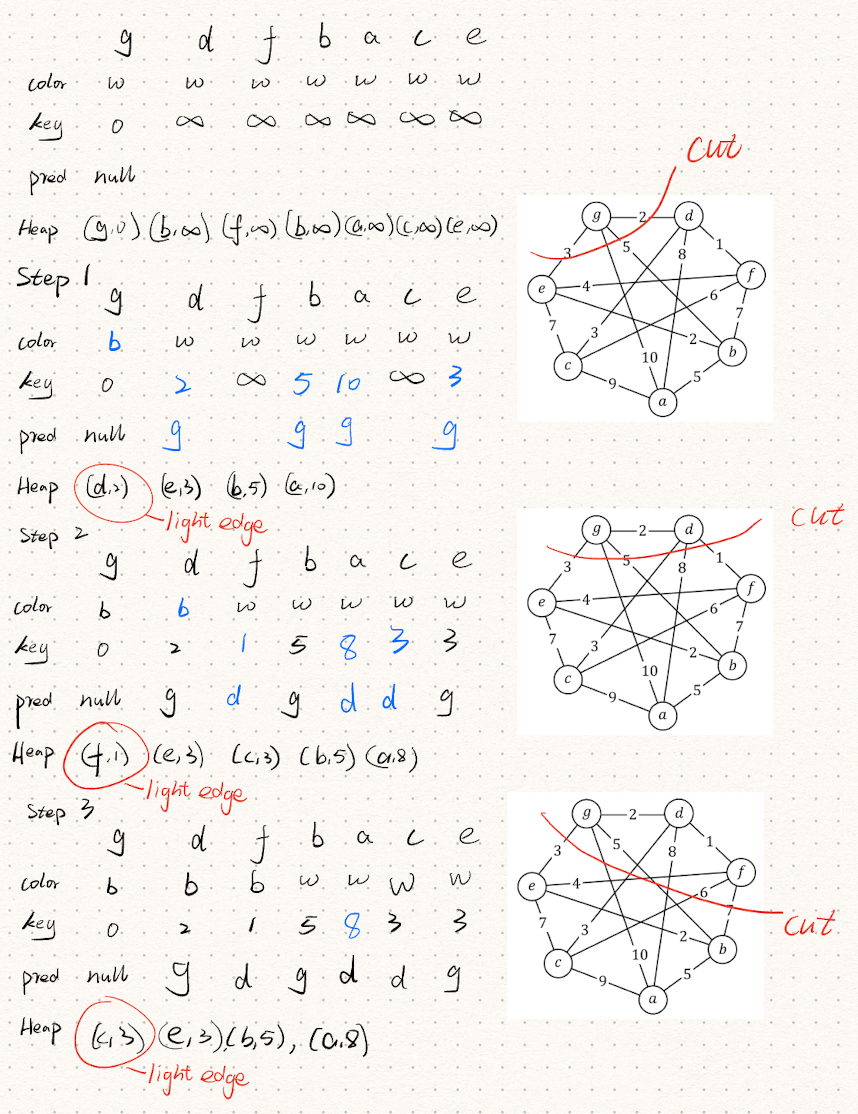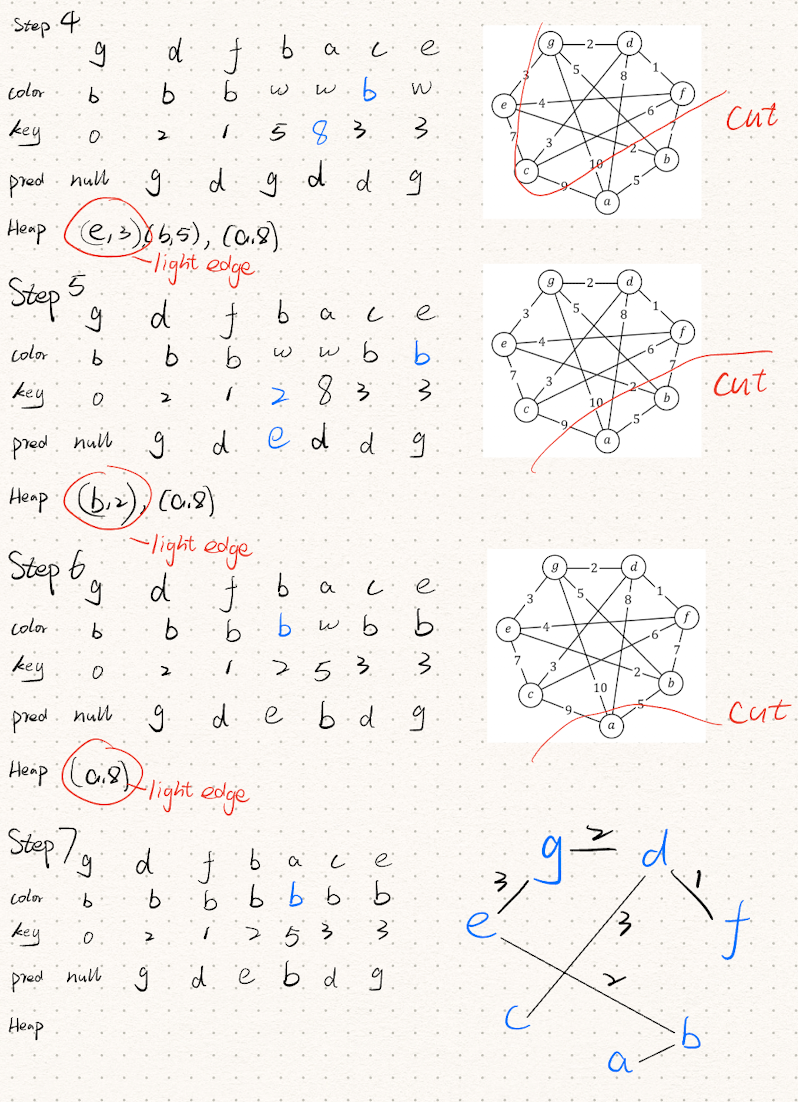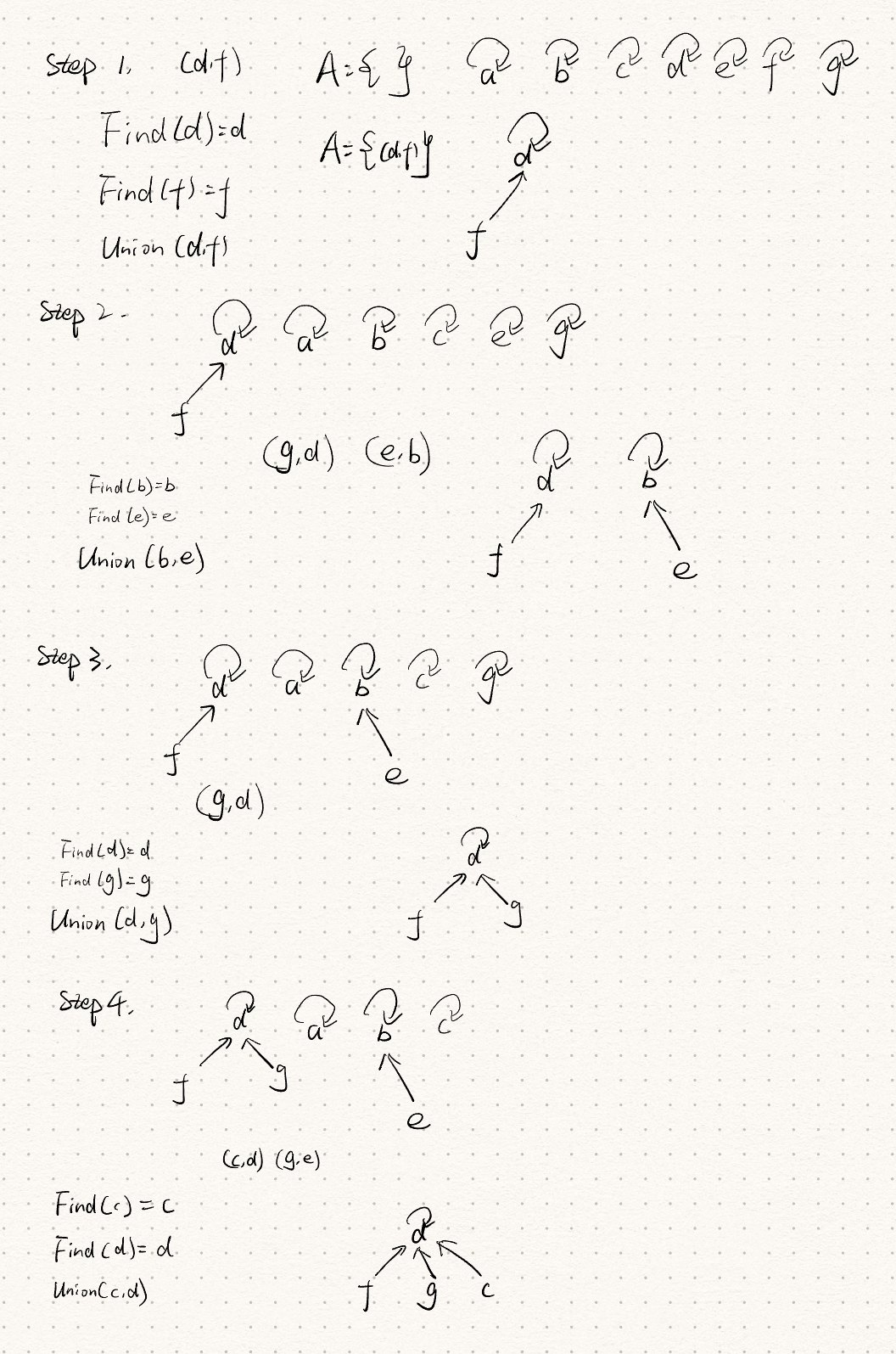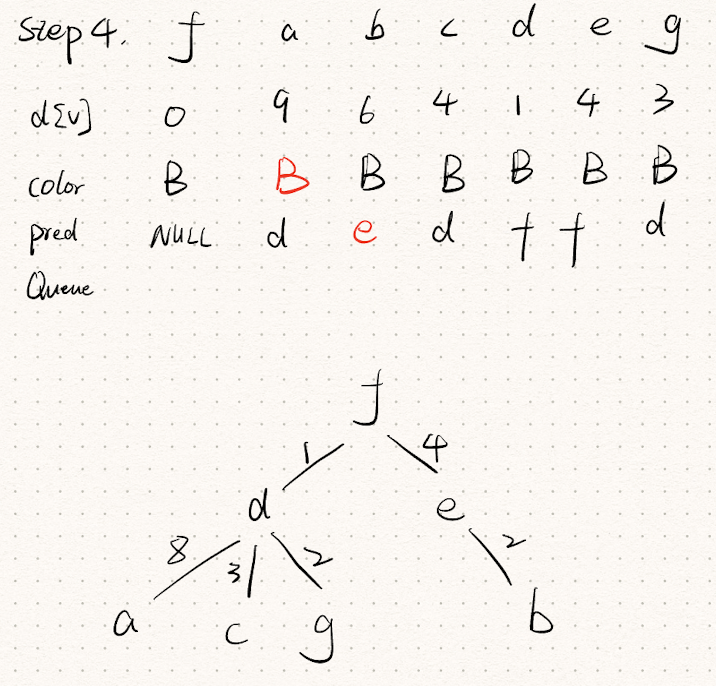date: 2024-05-11
title: DAA-Assignment-2
status: DONE
author:
- AllenYGY
tags:
- DAA
- Assignment
created: 2024-05-11T13:58
updated: 2024-06-11T01:14
publish: TrueDAA-Assignment-2
Question 1


Question 2


Question 3



Question 4
A tree is the maximum spanning tree of a graph if is a spanning tree of and the weight on the tree is maximized.
Mr. Smart designs an algorithm to find the maximum spanning tree. Is his algorithm correct?
Algorithm MaxST(G, w)
Require: a connected graph G=(V,E) with a weight function w:E→Z
Ensure: the maximum spanning tree T of G
begin
E←sort(E) in decreasing order based on w
A←{}
for all u∈V do
CREATE-SET(u)
end for
for all (u,v)∈E do
if FIND-SET(u)=FIND-SET(v) then
add (u,v) to A
UNION(u,v)
end if
end for
return (V,A)
end
Note that his algorithm is exactly same as Kruskal’s algorithm except that the loop from line 7 to 12 iterates on edges in the decreasing order. (15pts)
I think his opinion is correct.
Definitions
- Heavy Edge: An edge is considered a heavy edge crossing a cut if its weight is the maximum among all edges crossing that cut.
- Safe Edge: An edge is considered safe if its inclusion in the growing forest does not violate the properties of the maximum spanning tree (i.e., it does not create a cycle with edges already included in the MST and its addition results in a spanning tree with the maximum possible total weight).
Proof
Case I: Heavy Edge is Safe Edge
- If the heavy edge is part of the MST, then by definition, it contributes to forming the maximum possible weight of the MST.
- Since it is the heaviest edge across a particular cut and it is part of the MST, it is safe because its exclusion would result in a non-optimal tree (i.e., a tree with less total weight).
Case II: Heavy Edge is Not Safe Edge
- Assume for contradiction that there is a heavy edge
- If
- However,
- This leads to a contradiction because it would imply that the current MST is not truly the maximum spanning tree as excluding
Question 5
Given a weighted connect graph
Mr. Smart designs the following algorithm to find the maximum simple path from one vertices to all other vertices. Is his algorithm correct? Prove your answer.
Algorithm MaxSP(G, w, s)
Require: a connected graph G=(V,E) with a weight function w:E→Z, a source vertex s∈V
Ensure: the maximum distance Δ(s,v) for all v∈V
begin
for all u∈V do
d[u]←∞
color[u]←W
end for
d[s]←0
pred[s]←NULL
Q←new PriorityQueue(V)
while Q is not empty do
u←Q.extractMax()
for all v∈adj[u] do
if d[u]+w(u,v)>d[v] then
d[v]←d[u]+w(u,v)
Q.increaseKey(v,d[v])
pred[v]←u
end if
end for
color[u]←B
end while
return d[u] for each u∈V
end
Note that his algorithm is exactly same as Dijkstra’s algorithm except that the priority queue is implemented by a Max Heap. Each round of the loop from line 9 to 19 extract the largest weight edge. And is updated if . (15pts)
I think his algorithm is not correct.
- When updating distances using the condition
- However, since all
Question 6
From the lecture, Mr. Smart knows that Prim’s algorithm runs in Kruskal’s algorithm runs in Kruskal’s algorithm. Is he correct? Prove your answer. (10pts)
I think he is not correct.
Time Complexities
- Prim's Algorithm: Actually as
- Kruskal's Algorithm: Commonly has a complexity of
Dense map
- In dense graphs, there are far more edges than vertices, for example
The time complexity of Prim's algorithm is
The time complexity of Kruskal's algorithm is
In this case, the time complexity of Prim's algorithm is lower than Kruskal's algorithm.
Sparse graph
- In a sparse graph, the number of edges is close to the number of vertices, that is,
The time complexity of Kruskal's algorithm is
The time complexity of Prim's algorithm is
In this case, the time complexity of Kruskal's algorithm is lower than that of Prim algorithm.
Conclusion
Therefore, it cannot be said that the time complexity of Prim's algorithm is always lower than that of Kruskal's algorithm.